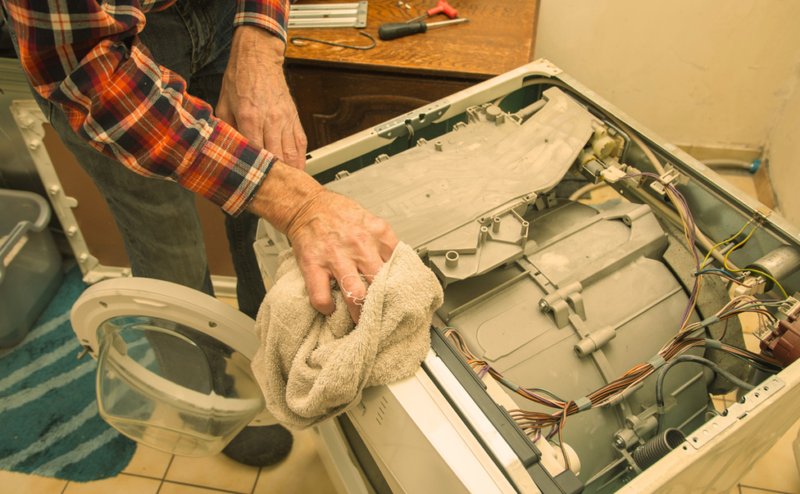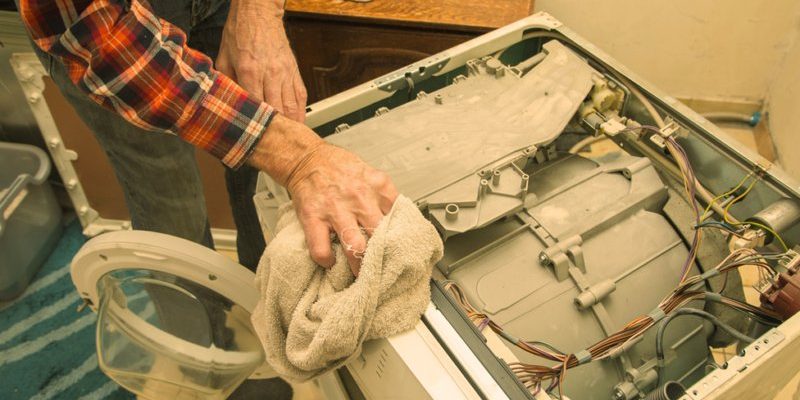
Honestly, it’s easy to forget: a little carelessness with a pressure washer can turn a handy remote or a sensitive electronic device into a dead weight. Maybe you rinsed off a LiftMaster keypad, a Genie garage door remote, or even a security camera from Ring or Nest, thinking a quick wash wouldn’t hurt. Suddenly, nothing works. You might see blinking lights, odd codes on a display, or buttons that just don’t do anything. That’s where a little patient troubleshooting comes in—and it could save you from a costly replacement.
What Happens When Power Washing Damages Hardware?
Let me explain why pressure washing and electronics rarely mix. When a strong blast of water hits something like a garage door remote or an outdoor electrical panel, water can get inside spots that are meant to stay dry. Gaskets, seals, or plastic covers can only do so much—power washing is like poking holes in an umbrella with a sharp stick.
Once that water seeps inside, it can do a few things:
- Short circuits happen when water creates a temporary connection between parts that aren’t supposed to touch.
- Corrosion starts if the circuit board or battery connections get wet and then dry out slowly—this can eat away the metal inside.
- Debris from the pressure washer itself (dirt, dust, grass) might be forced inside, muddying up internal components.
You might notice the damage right away (a dead remote) or only later on, when things start acting weird. Sometimes the device will flash a code, act like it’s out of sync, or refuse to pair with what it used to control. That’s why troubleshooting is so important: you want to figure out if it’s a quick fix (like drying out a battery), a code issue, or if there’s deeper electronic damage.
Signs Your Hardware Was Damaged by Power Washing
Here’s the thing: a power washer mishap won’t always leave obvious signs—sometimes there’s no shattered plastic or loose wire. But there are subtle ways to tell your device got doused.
- It won’t turn on—press all the buttons, flip the switches, and nothing happens. If it worked before the washing and is dead now, that’s a red flag.
- Erratic behavior—maybe your Chamberlain or Genie remote starts blinking oddly, or your security camera keeps rebooting or throwing sync errors.
- Connection problems—devices that should pair or reset easily suddenly won’t sync with their “base” unit.
- Physical clues—look for condensation inside plastic covers, rust on battery contacts, or flaky, white residue (that’s corrosion).
Don’t ignore weird sounds, like crackling or humming, either—water getting under a button or onto a circuit board can lead to all kinds of trouble. If your remote or device worked fine until you cleaned around it, that’s the piece of the puzzle that matters.
First Steps: What To Do Immediately After Power Washing Damage
Don’t panic—some things are fixable if you act quickly. As soon as you suspect you’ve blasted your hardware with water, get it out of harm’s way and do this:
- Turn it off—if your device has a power button or a removable battery, shut it down right away.
- Remove batteries—for remotes, garage controls, or anything with a battery compartment, take out the batteries immediately to stop further damage.
- Open it up (if you can)—remove covers, open battery doors, and gently pry open accessible panels. Just don’t force anything—if it doesn’t come off easily, leave it.
- Dry it out—gently shake out moisture, then leave the hardware in a dry, warm spot for a day or two. Never use a hairdryer or microwave—it can melt plastic or damage circuits.
- Avoid using it—resist the urge to test it every 10 minutes. Electricity and lingering water don’t mix, so patience is your friend.
If there’s visible water inside a display, or you see droplets in a remote’s button area, leave it to dry longer. Deep moisture takes time to escape.
If you know which model you have (like Genie G3T remote, LiftMaster keypad, or a Ring camera), check the manual or the brand’s website. Some manufacturers offer emergency steps or even warranty advice if you explain the situation.
Drying and Cleaning: How To Recover Your Device
After the first panic fades, it’s time for a careful recovery. Water isn’t always a death sentence for electronics—if you act fast, you might be able to save your device.
- Leave it open to air dry for at least 24–48 hours—longer if you can see moisture trapped behind screens or under buttons.
- Use desiccants if you have them—those silica gel packs that come in electronics boxes can help pull moisture out. Put the device and packs together in a sealed container.
- Clean battery contacts—if you see rust or corrosion, gently rub the contacts with a cotton swab and some rubbing alcohol. This can help restore connections that became rusty after a soak.
- Inspect the circuit board (if you’re comfortable opening it further)—look for white residue or green-blue corrosion. Carefully dab with rubbing alcohol, but avoid scrubbing or bending anything delicate.
Here’s my advice: don’t try to rush things with heat. You risk warping the plastic or causing parts to expand in ways they shouldn’t. And if your hardware is especially valuable, or you’re not comfortable popping it open, consider asking a tech-savvy friend or repair shop to look at it.
Resetting, Syncing, and Re-Coding After Damage
Okay, so your hardware is finally dry. Now what? Often, the next step is to check whether it still “talks” to the base device—or if it needs a code reset or pairing.
- Try a reset—most remotes and garage devices have a reset button hidden under the battery door or on the circuit board. For a Genie or LiftMaster remote, the reset process usually involves holding a button for a set number of seconds. Check your user manual for model-specific steps.
- Pair or sync again—sometimes, water resets the device’s memory, so it forgets what it was paired to. Use the brand’s pairing sequence (like pressing a “Learn” button on a garage opener) to reconnect.
- Replace the battery—even a little water can quickly drain or destroy a battery. Always try a fresh one after drying out the device.
- Test all functions—see if every button works, if the LED flashes correctly, or if pairing holds. Don’t just test once; try the device across different functions.
If you’re working with a universal remote, you may need to reenter codes or do a full re-sync with the device it controls. Sometimes, the process can feel frustrating—but keep trying, as a device might only “wake up” after a complete code reset and fresh batteries.
When To Replace vs. Repair: Making the Call
Let’s be straight: sometimes hardware just can’t be saved after power washing. If you’ve tried all the drying and cleaning steps, swapped batteries, and done the code resets with no luck, you might need to move on.
- Consider the age and value—is your remote or panel already a few years old, or was it glitchy before the accident? Reparability goes way down once rust or corrosion sets in.
- Brand or model specifics—some brands (like high-end Chamberlain or LiftMaster hardware) might justify a pro repair, but for most generic models, replacement is cheaper and faster.
- Universal vs. brand hardware—universal remotes or keypads can be replaced easily, but brand-specific hardware (with rolling codes, built-in security, or camera feeds) is trickier to substitute.
- Warranty questions—if your device is still under warranty, check with the manufacturer before tossing it. Be honest about what happened—sometimes they’ll surprise you.
The bottom line? If you notice visible corrosion, the device won’t turn on, or it acts unpredictably even after all troubleshooting steps, it’s usually time to buy a replacement. Don’t risk further issues by forcing a water-damaged device to work.
Preventing Future Disaster: Safe Cleaning Tips for Hardware
So, you’ve survived the headache of troubleshooting power-washed hardware—let’s make sure it doesn’t happen again.
- Cover electronics—before you power wash, use plastic bags, tape, or specialized covers over any remote, panel, outlet, or keypad in the blast zone.
- Remove what you can—take remotes, fobs, or standalone sensors indoors before you clean.
- Use lower settings—adjust your washer’s pressure down when cleaning close to electronics. Distance is your friend—the farther away, the less chance water gets inside.
- Hand clean sensitive devices—if you must clean remotes, use a damp (not wet) cloth, and avoid letting liquid pool around seams or openings.
A little prep can save a lot of headache. Honestly, no rush of clean siding or concrete is worth the cost of a fried garage door remote or outdoor keypad.
What If It’s Not Just the Remote? Dealing With Damaged Panels and Sensors
Sometimes, the real problem after a cleaning mishap isn’t the handheld remote—it’s the wall panel, outdoor sensor, or security camera that took the brunt of the spray. These are trickier, because they’re often wired in or mounted out of reach.
- Look for GFCI trips—if a circuit panel or keypad won’t work, check your home’s GFCI outlet or breaker. Water can cause a ground fault, tripping protection circuits.
- Inspect for visible water—if you see foggy plastic, water running behind a keypad, or a security camera lens with moisture inside, leave it powered off and open if possible.
- Let everything dry—give mounted devices extra time to dry; moisture can hide behind seals or inside wiring channels.
- Consider pro help for re-coding—if a complicated panel or smart device refuses to pair or reset, a technician familiar with the brand can sometimes save the hardware before you replace it.
Water damage isn’t always fatal for hardwired equipment, but it’s more likely to cause lingering issues, especially with code syncing, pairing, or even safety checks on things like automatic gates and doors.
Final Thoughts: Get Back to Clean Without Sacrificing Your Tech
You might be surprised at how common it is for remotes, panels, and other hardware to get caught in the crossfire during a power washing marathon. It’s frustrating but fixable—at least sometimes. The key is to act quickly, dry things out, clean contacts, and reset or re-code as needed. And when in doubt, don’t risk using a waterlogged device—better safe than sorry.
Next time you’re tempted to blast everything in sight, remember: your gadgets need a little protection, too. A few minutes of prep can save you hours of troubleshooting—or the cost of a new remote. Stay dry and keep your tech running strong.
